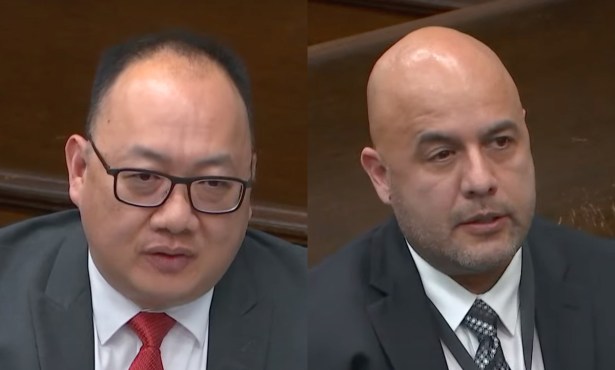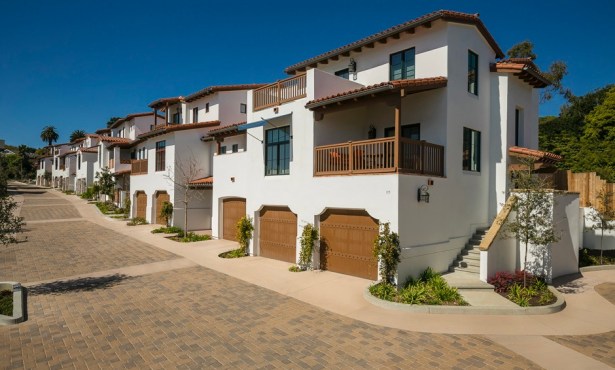Santa Barbara County’s Housing Element Explained
Will County Meet Its Allocation of More Than 24,000 Units by 2031, and How Will Each City Respond?

City leaders from all over Santa Barbara County are brainstorming a plan to meet the state’s allocation of 24,856 units for the next “Housing Element” cycle from 2023-2031, with each of the cities scrambling to prove they can address a growing housing crisis without opening a can of worms by overadjusting zoning laws or review policies.
But as discussion continues in boardrooms and city halls throughout the state, questions arise as to what exactly this statewide allocation means and what level of planning these cities need to provide to the state in order to be found “in compliance” with the California Department of Housing and Community Development (HCD) when they submit applications in February 2023.
California’s “Housing Element” is a law that, according to the HCD website, requires all local governments both at the city and county level to “address the housing needs and demand” of residents and specifically that they “adopt plans and regulatory systems that provide opportunities for — and do not unduly constrain — housing development.”
In a sense, the state ensures that each city and county is proactively tackling housing needs in their own communities, tailoring each local plan to meet the unique needs of its residents.
The housing element hinges on the Regional Housing Needs Allocation (RHNA, pronounced “reena”), a figure determined by the state for every eight-year cycle using demographic population data from the California Department of Finance, which is then taken by each county planning body to arrive at a final number.
Locally, the Santa Barbara County RHNA number more than doubled from an allocation of 11,030 units for the previous cycle to 24,856 for this cycle. Each area will take their own portion of the county number, with Santa Barbara’s allocation at 8,001, Goleta at 1,837, Carpinteria at 901, and the unincorporated areas making up 5,664 units for the upcoming cycle.
John Douglas, planner from JHD Planning LLC, explained during a recent meeting of the Carpinteria Planning Commission that these numbers represent a figure that would solve the county’s existing housing issues and that the cities would just have to prove that they could meet the allocation instead of actually building all of those units by 2031.
“First of all, it’s important to recognize it’s a projected housing need,” Douglas said. “That number would solve all of the existing housing problems, including people living in overcrowded housing.”
Douglas said that many economists consider the allocation numbers unachievable but that the housing element plans are productive in getting city governments to consider how they will navigate zoning issues to create space for units if existing residential zones cannot cover the projected need.
He identified four important themes in state housing element laws: maintaining and improving existing housing, planning for regional growth for all housing types, minimizing constraints to housing development, and affirming availability of affordable housing.
Smaller municipalities like Carpinteria and Goleta will have an easier time at meeting their allocations under existing zoning codes, but with RHNA numbers continuing to rise as more and more people are in need of housing across the state, local governments might have to get creative to prove they can provide housing into the future.
Sign up for Indy Today to receive fresh news from Independent.com, in your inbox, every morning.
“The bottom line is cities are legally required to demonstrate they can accommodate that,” Douglas said.
In Goleta and Carpinteria, some planning commissioners have floated the idea of upping the maximum units per acre, while others have suggested rezoning multi-use or industrial parcels as residential.
In Santa Barbara, where city leaders held a joint Planning Commission and City Council meeting on the issue, it became apparent that the city was already behind on its last housing element cycle — with Rob Fredericks of the city Housing Authority projecting that the city will meet only about 44 percent of its previous allocation of 4,100 units before the end of the cycle.
Even more alarming is the city’s report card on the distribution of the units that have been developed: By the end of the year, the city is expected to reach 95.8 percent of its goal in “above moderate income” housing, while only 232 affordable units have received building permits, leaving a total of 1,431 affordable units that would need to be permitted to meet the previous allocation.
“[We’re] still far off the mark of actually producing the 4,100 that the community actually needed,” Associate City Planner Renee Brooke said. Of the nearly 700 units still pending city approval, almost all are considered at or above market rate, while there are 17 low-income units in the pipeline, creating a situation in which the city needs to simultaneously incentivize affordable housing while also loosening review guidelines to allow for more units.
The due date for each city’s Housing Element adoption is February 15, 2023, leaving city leaders a few months to narrow down each plan. Each council will submit an early draft to HCD for a 90-day review between July and September, followed by revisions and public hearings through the end of the year.
The public is invited to attend an upcoming “South Coast Housing Workshop” on Wednesday, June 22, 4-6 p.m., in the Faulkner Gallery at the Santa Barbara Public Library, where representatives from Goleta, Carpinteria, Santa Barbara, and the county will discuss ideas for the future of housing.
Support the Santa Barbara Independent through a long-term or a single contribution.



